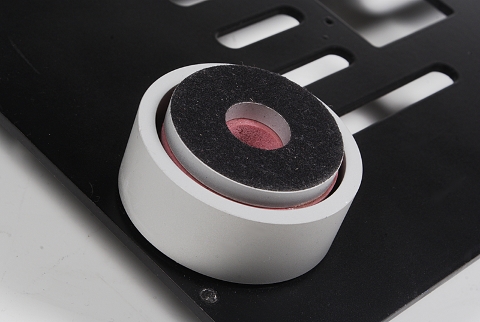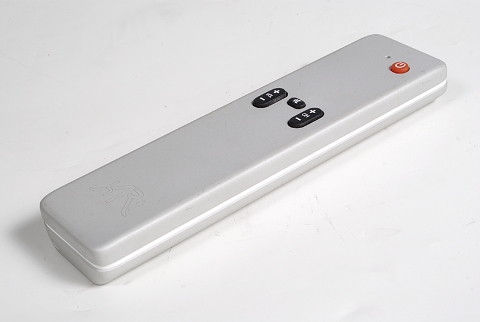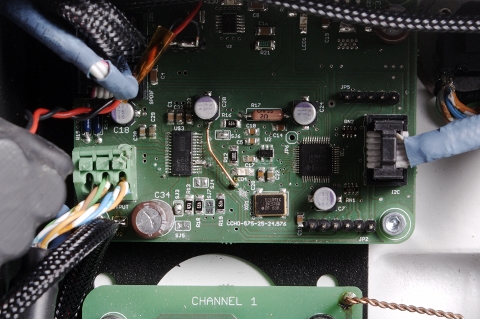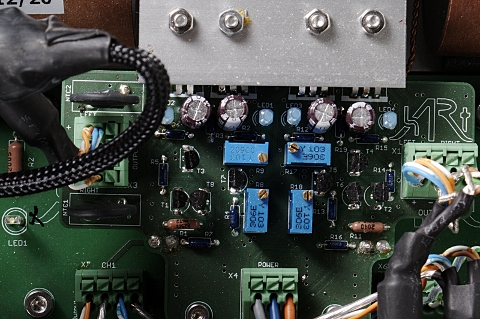about Audio, High Fidelity
& Home Entertainment technologies
pid: 607-2025/10/01 (v1.2)
Privacy Policy
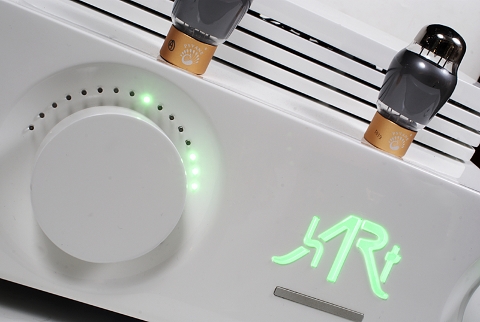
It's almost certain that you've encountered the Tune Two at some exhibition or show, either at the Athens Black Box Show or at the Munich High-End Show, and its characteristic chassis with the wooden surfaces is not easily forgotten. If the Tune Three power amp won us over with its… weight, the Tune Two will win you over with its multi-faceted (literally) presence and the two large encoders on the front panel, one of which acts as the input selector (on the right) and the other as the volume control. A touch switch in the center of the front panel functions as the Stand-by/On with the large illuminated logo, not going unnoticed. Two hidden switches, located at the bottom (you need a little practice to find them immediately), allow for the adjustment of the phono input parameters (if this input is present, you can select load, gain, and capacitance among 8, 2, and 5 values respectively) as well as for the selection of the LEDs and logo color and intensity from a truly wide variety of values.
The Tune Two is an impressive design that will immediately attract attention. The external casing is made of fiberboard and its finish is of very good quality. The side surfaces can change, as well as the color and brightness of the indicators.
In its basic version, the preamplifier offers five line-level inputs, while if the phono preamplifier module is installed, these become four (one becomes the phono input). The DAC module offers two standard digital inputs (optical and coaxial) as well as three USB-A inputs for connecting external storage media. The preamplifier provides network control via any device with a web browser, even in its basic version, so the streamer, WiFi, and Ethernet connections are installed in all versions of the device. In practice, you need to connect it to the home network anyway if you want to control it via a third-party device. Of course, there is a stylish, quite heavy conventional remote control, through which basic operations can be performed. On the horizontal surface of the device, the user will find the headphone output (through a TRS, 6.35mm) and one of the three USB-A ports for easy connections.
Level adjustment is made in 64 steps of 1dB and the feel of the encoder is very positive. The touch switch for Stand-by/On is located under the logo. The headphone output is on the horizontal surface of the device.
The input selector also has a very positive feel. Initially, it allows the selection of the analog inputs and then, when the sixth LED lights up, offers the selection of the two digital inputs and the streamer. The user can place digital storage devices in a USB-A port on the preamp's horizontal surface.
At the back, all the necessary ports are present, with the output to the power amplifier offered in two versions. In the standard, Main, version, the output is taken after the semiconductor-based buffer (more on that in the next paragraph) and can be used with all power amplifiers. In the Direct version, the output is taken directly from the tube stage and requires power amplifiers with input resistance greater than 30kΩ.
The internal structure of the Tune Two is quite interesting. The preamplifier is built around the same voltage amplification stage used in their Tune Three power amp, based on a dual triode CV181, which is biased in class A, using LED, and operates under conditions without global feedback (only local feedback via the aforementioned LED is applied). The CV181 is a tube that is not only available in matched pairs (so that the two channels of the amplifier are as balanced as possible) but also with matched internal triodes.
The main circuit of the Tune Two uses a CV181 dual-triode per channel. The tube sockets are made of Teflon.
Here, the analog inputs and outputs are shown. The preamplifier has two outputs, the Main, which is taken from the semiconductor buffer, and the Direct (shown here as Sub), which is taken directly from the tube stage.
As in the power amplifier, the tube stage is followed by a symmetric semiconductor buffer stage, implemented with FETs biased in class A; however, in the case of Tune Two, we are not talking about a power buffer, and the user can choose whether to use it by connecting the power amplifier to the appropriate output. The preamplifier attenuator features 64 relay-controlled 1dB steps, with a topology that keeps its input resistance constant. The resistors used here, are high-precision, optimized for audio applications. Input selection is also done with relays placed near the input jacks. The headphone output is driven directly from the tube stage. High-quality components are featured (as expected from a device in this price range). The tube sockets are made of Teflon, the coupling capacitors belong to the Miflex KPCU-01 series (copper foil/paper/polypropylene with oil dielectric), and the internal wiring is done with Viablue cables.
The phono preamplifier is a FET-based circuit, also biased in class A with the de-emphasis network being passive. It is housed in a separate metal enclosure for greater noise reduction.
The digital part of the Tune Two includes standard digital inputs, three USB-A ports in total (the two are located on the back), as well as an Ethernet/RJ45 port for connection to the home network. There is also the option of wireless connection via WiFi.
The device's support points are very well thought out. Here, the vibration absorption material inside is shown.
The DAC module is based on a digital interface/SRC and a Texas Instruments d/a conversion chip (SRC4392 and PCM5122) and is powered by its own power supply. It cooperates with a Single Board Computer (SBC) running the Volumio playback application and the device control software. The computer, also, allows operation via a web interface and supports the streaming function of the preamplifier via Ethernet and WiFi. While the DAC is optional, the SBC is included in all versions of the device.
Overall, the power supply of the preamplifier seems to be very well thought out, with different toroidal transformers for the analog and digital parts, many local regulators, twelve in total, and a separate power supply for the control circuits. The company claims that its characteristics simulate those of batteries in terms of noise.
The chassis of the Tune Two is a composite structure, according to the company's beloved approach. It consists of the external shell, which is made of high-density fiberboard, finished with high-quality lacquer, and the internal, metal chassis. hARt places great importance on the damping of vibrations (a significant matter especially in circuits with tubes) and ensures the isolation of individual parts, such as input/output jacks and power transformers, while the device's support points are based on the FloatO architecture used by the company in all its products.
The preamplifier is available in a variety of colors, and additionally, the side panels can be easily slid out and replaced with others with different colors/finishes. This capability, combined with the feature of changing the colors and the intensity of the LEDs on the front panel, makes the Tune Two the most flexible device we've encountered in this regard.
The conventional infrared remote control is made of solid aluminum and provides access to the basic functions of the device, level adjustment, input selection, and mute.
In its full version, the Tune Two is a complex device. The inner, metallic, chassis houses the power supply (top), the preamplifier circuit (bottom), the phono module (bottom left), the DAC (bottom right, opposite the phono), and the SBC (top, center).
The coupling capacitors belong to the Miflex KPCU-01 series and are specialized for audio applications.
Previous | Next | More Reviews







